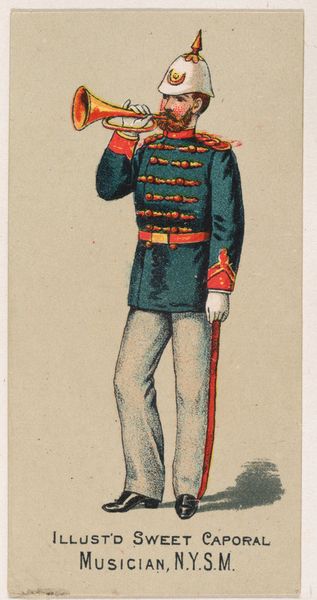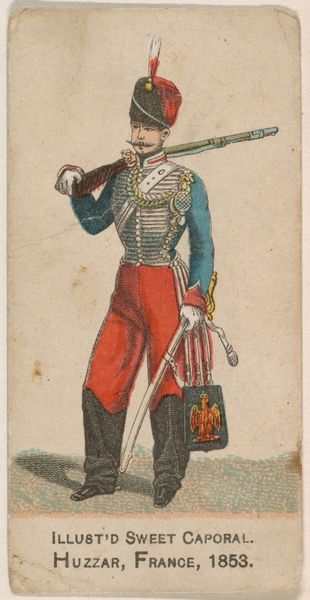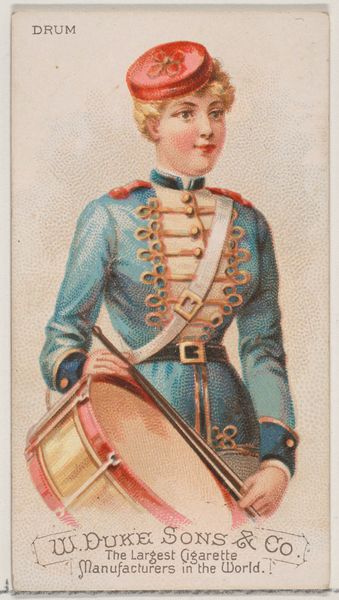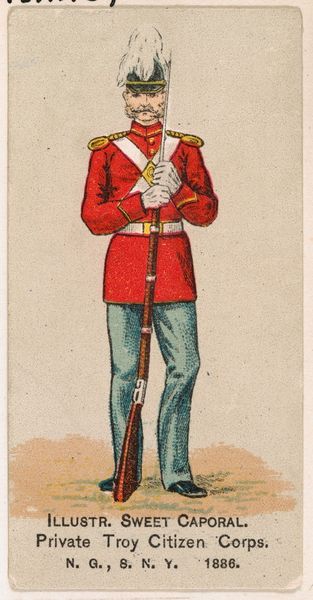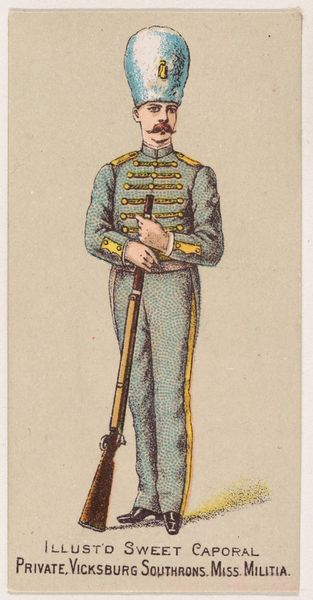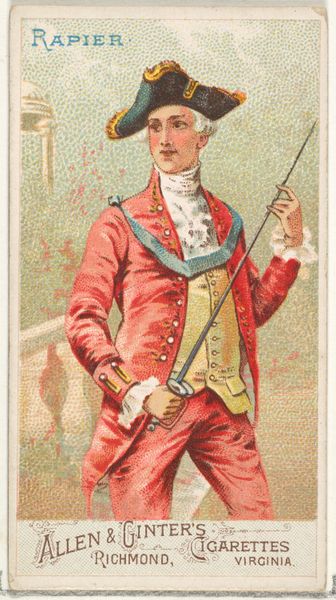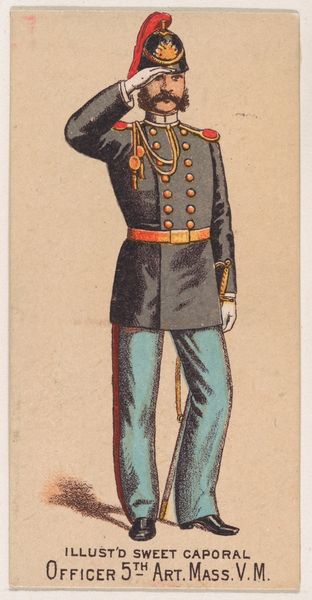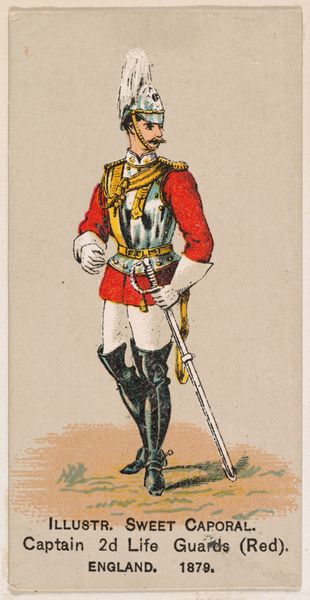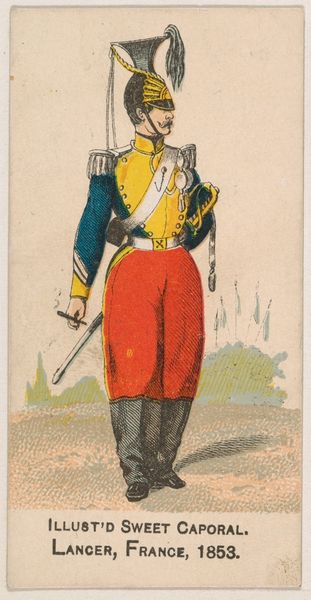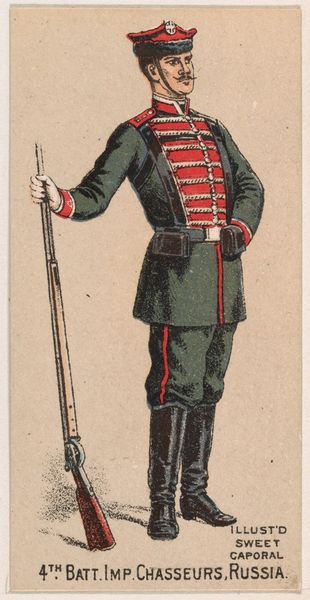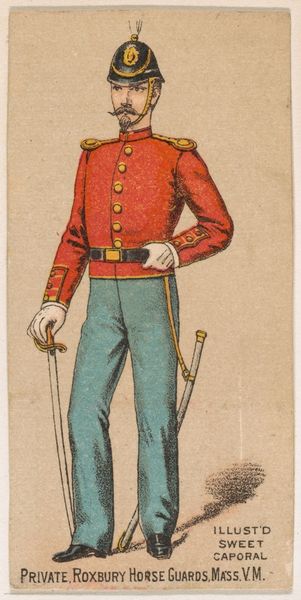
Bugle, from the Musical Instruments series (N82) for Duke brand cigarettes 1888
0:00
0:00
drawing, coloured-pencil, print, watercolor
#
portrait
#
drawing
#
coloured-pencil
# print
#
oil painting
#
watercolor
#
coloured pencil
#
watercolour illustration
#
genre-painting
Dimensions: Sheet: 2 3/4 x 1 1/2 in. (7 x 3.8 cm)
Copyright: Public Domain
Editor: This is "Bugle," from the Musical Instruments series, made around 1888 by W. Duke, Sons & Co., quite possibly using colored pencil and print. It’s quite striking how crisp and neat the figure looks in her uniform. What historical context am I missing here? Curator: Well, consider that this image comes from a cigarette card, part of a larger marketing strategy. Cigarette companies, like W. Duke, Sons & Co., were keen on mass appeal. So, what does the figure's formal attire signal to you within that context? Editor: Authority and aspiration, perhaps? The uniform implies discipline and a respectable public image. But it's being used to sell…cigarettes? It feels almost contradictory. Curator: Precisely! The juxtaposition highlights a fascinating interplay between commerce and culture. Cigarette cards were essentially miniature pieces of readily-accessible art, circulating idealized images and social values alongside a habit-forming product. Think about who these images were targeting. Who was this manufactured imagery designed to influence and how? Editor: It’s like they're using cultural symbols of prestige to associate them with smoking. So, in a way, art becomes a tool for shaping social behaviors and perceptions. Were these cards considered disposable? Curator: Ultimately, yes. But their initial impact was quite significant in disseminating and standardizing cultural imagery. Now, think about the power dynamics inherent in this method. Who had the power to produce and distribute these images, and who were the consumers? Editor: Okay, that makes me see this less as a charming illustration and more as a cog in a larger consumerist machine. Very different. Curator: Exactly. Examining these cards provides insights into how commercial interests leveraged art to influence and reflect societal values during the late 19th century. A different angle, no? Editor: Definitely. I hadn't considered the power dynamics involved. Thanks for illuminating the history.
Comments
No comments
Be the first to comment and join the conversation on the ultimate creative platform.

